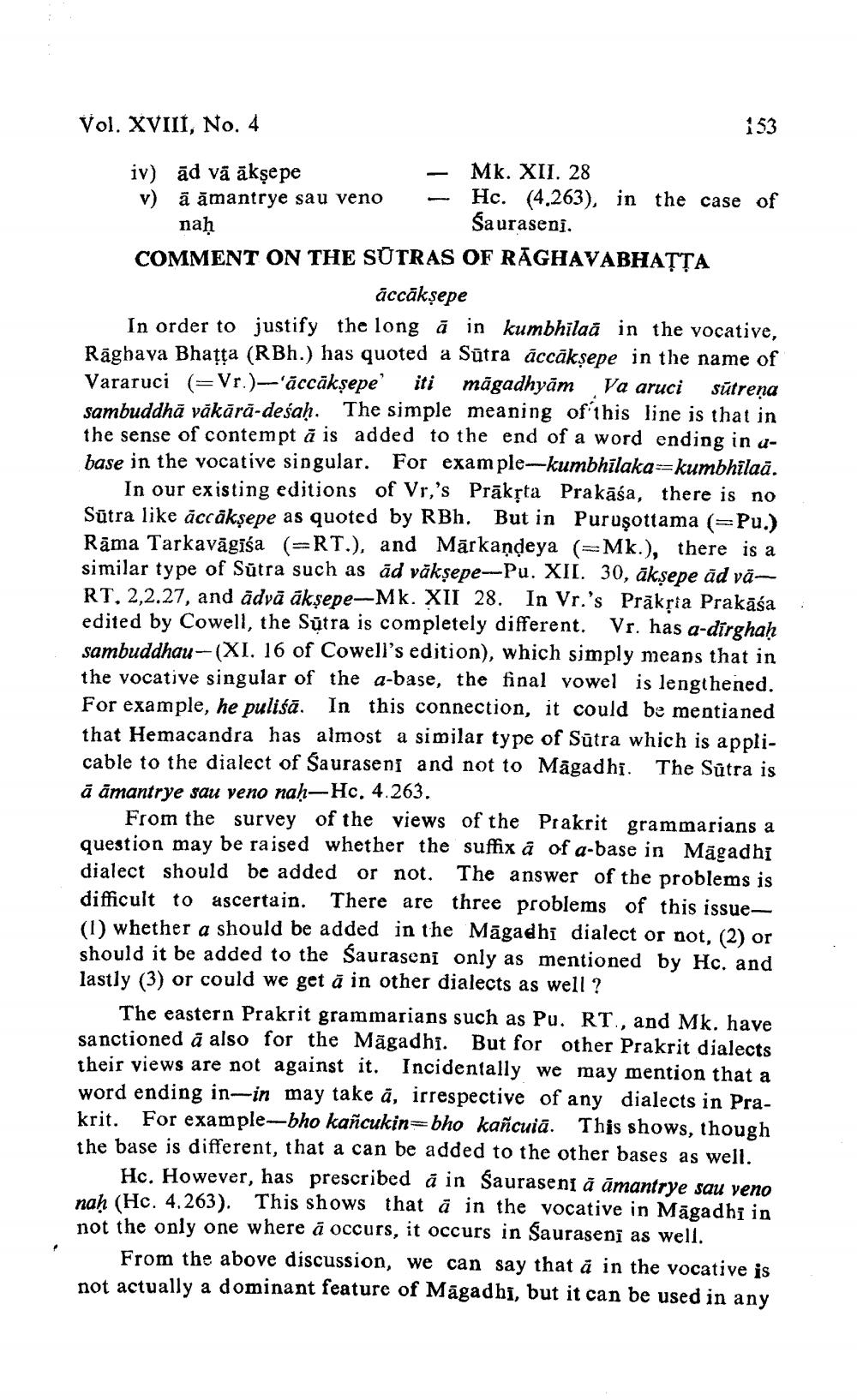________________
Vol. XVIII, No. 4
153
iv) ad vā ākṣepe
- Mk. XII. 28 v) ā āmantrye sau veno – Hc. (4.263), in the case of naḥ
Sauraseni. COMMENT ON THE SUTRAS OF RĀGHAVABHATTA
accākṣepe In order to justify the long ă in kumbhilaă in the vocative, Rāghava Bhatta (RBh.) has quoted a Sūtra accākṣepe in the name of Vararuci (=Vr.)-'accākṣepe' iti māgadhyām Va aruci sūtreņa sambuddhā vākārā-deśaḥ. The simple meaning of this line is that in the sense of contempt ă is added to the end of a word ending in abase in the vocative singular. For example-kumbhilakaekumbhilaā.
In our existing editions of Vri's Prāksta Prakāśa, there is no Sūtra like accākṣepe as quoted by RBh. But in Puruşottama (=Pu.) Rāma Tarkavāgisa (=RT.), and Mārkandeya (=Mk.), there is a similar type of Sūtra such as ād vāksepe--Pu. XII. 30, ākṣepe ād vam RT, 2,2.27, and adyā ākṣepe-Mk. XII 28. In Vr.'s Prākļia Prakāśa: edited by Cowell, the Sūtra is completely different. Vr. has a-dirghah sambuddhau-(XI. 16 of Cowell's edition), which simply means that in the vocative singular of the a-base, the final vowel is lengthened. For example, he puliśā. In this connection, it could be mentianed that Hemacandra has almost a similar type of Sūtra which is applicable to the dialect of Sauraseni and not to Māgadhi. The Sūtra is ā āmantrye sau veno nah-Hc. 4.263.
From the survey of the views of the Prakrit grammarians a question may be raised whether the suffix å of a-base in Māgadhi dialect should be added or not. The answer of the problems is difficult to ascertain. There are three problems of this issue(1) whether a should be added in the Māgadhi dialect or not, (2) or should it be added to the Sauraseni only as mentioned by lastly (3) or could we get å in other dialects as well ?
The eastern Prakrit grammarians such as Pu. RT, and Mk. have sanctioned à also for the Māgadhi. But for other Prakrit dialects their views are not against it. Incidentally we may mention that a word ending in-in may take a, irrespective of any dialects in Prakrit. For example-bho kañcukin=bho kañcuiā. This shows, though the base is different, that a can be added to the other bases as well.
Hc. However, has prescribed å in Sauraseni å āmantrye sau veno nah (Hc. 4.263). This shows that a in the vocative in Māgadhi in not the only one where a occurs, it occurs in Saurasens as well.
From the above discussion, we can say that à in the vocative is not actually a dominant feature of Māgadhi, but it can be used in any




